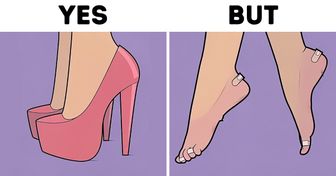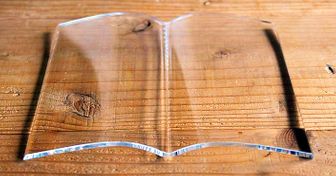What the Descendants of 10 World-Famous People From the Past Look Like Today

Many of us have probably wondered how world-famous car brands got their names and what their logos mean. The Mitsubishi logo, for example, consists of 3 diamonds which mean integrity, reliability, and success. And the Hyundai logo in the shape of a slanted letter H is actually a silhouette of 2 individuals shaking hands with each other.
At Bright Side, we decided to look into the history of the world of cars.
Kia corporation was founded in 1944 and was originally known as Kyungsung Precision Industry. At the time, they specialized in the production of bicycles. Korea’s first domestic bicycle was assembled at the plant of this company. Later they switched to assembling motorcycles and didn’t begin to build cars until the 1970s. The name KIA can be translated as “rising from Asia.”
Volvo was supposed to become a daughter company of SKF, which was founded in 1907 and manufactured ball bearings. In 1924, the company management decided to start building cars that could withstand the low temperatures and rough roads of Sweden. The recognizable Volvo logo is an ancient chemical symbol for iron. By the way, this is one of the most ancient ideograms in Western culture. As for the name, “volvo” means “I roll” in Latin.
Subaru was previously known as Fuji Heavy Industries. It was established in 1915. Its founder and president wanted new cars to have a Japanese name and asked company employees to provide him with ideas. However, he didn’t like any of the proposals, so he decided to use his own idea for the name. Subaru is the Japanese name for the Pleiades star cluster and also means “unite.” And the 6 stars in the logo illustrate the union of the 6 companies that participated in the development of this brand.
The company was founded by Iwasaki Yatarō in 1870 and was originally a shipping firm. It received its current name in 1873. The word “mitsubishi” consists of 2 parts, “mitsu” meaning “3” and “hishi” meaning “water chestnut,” but is also used to refer to a diamond. The Mitsubishi logo features 3 diamonds which refer to both the 3 oak leaves from the crest of the Yamauchi or Tosa family that ruled over the birthplace of the Mitsubishi founder and his father’s family crest, which consisted of 3 diamonds. These 3 diamonds represent reliability, integrity, and success which were the core values of Iwasaki’s family.
The history of Audi dates back to 1909. The company name is the Latin translation of the surname of the founder, August Horch, which means “listen” in German. The idea to use the word “audi” as a trade name came from the son of Horch’s business partner, and was enthusiastically accepted by everyone involved.
Lexus is a relatively young car brand. It was founded in 1989 by Eiji Toyoda who wanted to create a car for upper-class consumers. To better understand the needs of this segment, focus groups were conducted. The brand name was coined in 1986. It was chosen from a list of 219 options. One of the front runners was the name Alexis but since it was associated with the character of the TV show Dynasty, which was popular in the 1980s, it was decided to make it sound more modern resulting in the word Lexus. The brand creators stress that this word has no specific meaning, and implies a luxurious and technological image.
Infiniti was founded in Japan in 1989. The brand name refers to the endless road a driver can overcome with this car. According to the creators, the Infiniti logo has a double meaning. An oval with a triangle inside represents a road extending into the horizon and the highest mountain in Japan, Mt. Fuji, emphasizing the Japanese origin of the car.
The Hyundai Engineering and Construction Company was founded by South Korean businessman Chung Ju-Yung in 1947. The first model of this brand was released in 1968, and 17 years later, the one millionth Hyundai car was built. The brand name means “modernity” in Korean, and the company’s slogan is New Thinking. New Possibilities. The car logo also has a meaning. The slanted H represents 2 people shaking hands. One of them is a representative of the company, and the other one is a customer satisfied with the car’s quality.
SsangYong is the oldest and fourth-largest car manufacturer in South Korea. This brand started out as 2 separate companies established in 1954 and 1962. Initially, they built jeeps, trucks, and buses. In 1988, Dong-A Motor changed its name to SsangYong Motor which means “2 dragons” in Korean. The brand logo resembles 2 dragons which represent self-sufficiency, independence, harmony, and infinity.
The history of Mazda began in 1920. Initially, the future car manufacturer made corks. But in the 1930s, they began to build cars. In 1984, the company formally adopted the Mazda name, although 3-wheeled trucks had been previously built under this brand.
The creators gave them the name of the Zoroastrian god of light Ahura Mazda with the hope that it would improve the image of these compact vehicles. Also, the name of the brand was consistent with the name of the company president — Jujiro Matsuda. The Mazda logo is a pair of wings in the shape of the letter M. They represent creativity, vitality, kindness, and resilience.
In the 1920s, Jaguar was known as The Swallow Sidecar Company, S.S. for short, originally making motorcycle sidecars. In 1945, the shareholders, in a general meeting, agreed to change the company’s name to Jaguar. At the time, chairman William Lyons said, “Unlike S. S. the name Jaguar is distinctive and cannot be connected or confused with any similar foreign name.” The cars with the leaping jaguar logo are strongly associated with grace, elegance, performance, and power.
Do you drive? Do you have a car from one of the brands mentioned above? Tell us in the comments below.











